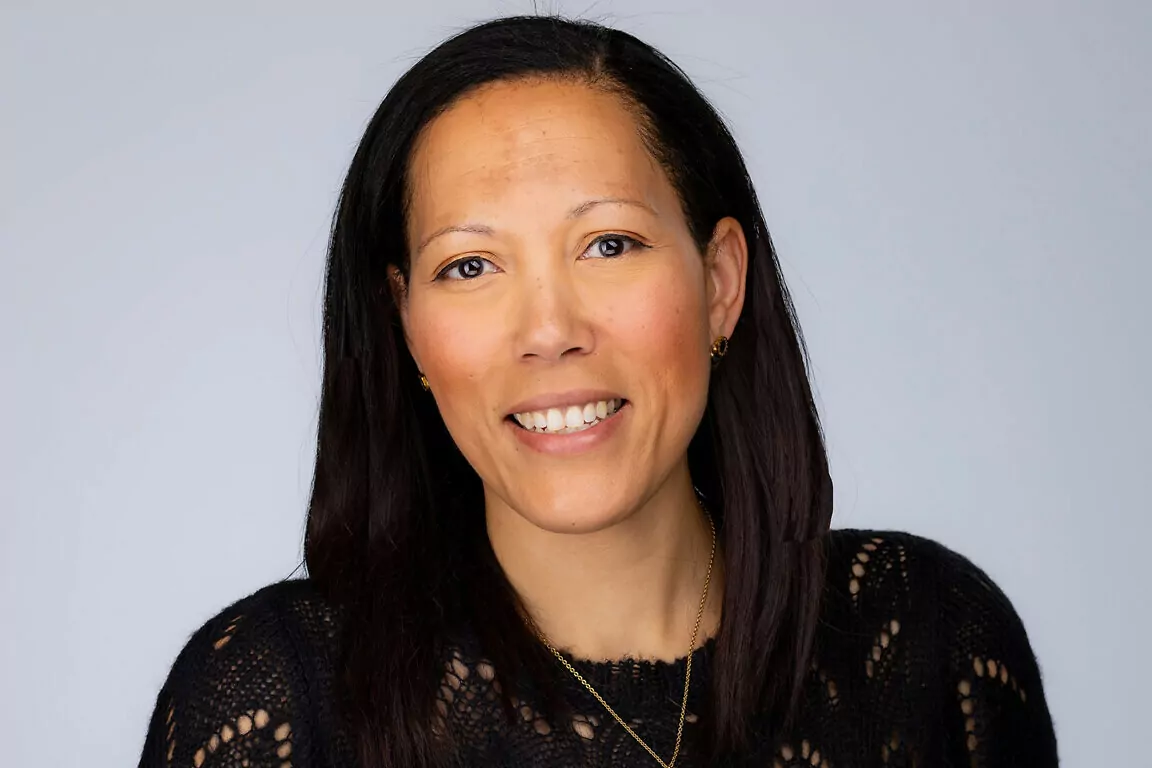The chief medical officer for Health Innovation Kent Surrey Sussex talks about women’s health for all and how to help marginalised communities.
How to manage health inequalities is MaryAnn Ferreux’s bread and butter and few are more articulate on the reasons for it and how it can be fixed. Here, the chief medical officer for Health Innovation Kent Surrey Sussex and a non-executive director for Kent and Medway NHS Partnership Trust, explains how she works with communities that have historically been underrepresented, and why some of the answers are very simple indeed.
“We’ve expanded our work to support marginalised and underserved communities, including refugees and migrant groups.”
Let’s start with your strategic vision at Health Innovation KSS. What are your main priorities for addressing health inequalities across the region?
As we’ve done more and more work in this space, we began by thinking about equity in its broadest sense. One of our first priorities was developing the first health equity framework for innovation, which was designed to cover a wide range of principles. That included looking closely at data to ensure it reflects the experiences of diverse populations, considering diversity within teams, boards and leadership, and thinking through issues like policy, climate change, and financial sustainability. That work opened our eyes to the bigger role we could – and should – be playing in addressing health inequalities.
One of the first areas we wanted to focus on was women’s health. My view has always been that if we can’t close the gender health gap – and women make up 51% of the population – then we’ve got no chance of improving outcomes for any other marginalised or underserved group.
More recently, we’ve expanded our work to support marginalised and underserved communities, including refugees and migrant groups. We partnered with a refugee charity called Nafsiyat to create intercultural awareness training – focused on providing culturally competent and safe care.
Is the message getting through about women’s health?
Things are changing – slowly. Women do live, on average, up to ten years longer than men, but often in poorer health. There are a lot of cultural issues tied up with women’s health.
As women, we also haven’t always talked openly within our social groups about some of the issues that are now starting to come out into the open. These days, we’re having conversations about pelvic pain, about perimenopause and its symptoms, about domestic violence and about the challenges of parenting.
But it’s not happening fast enough. The scale of the problem in women’s health is just so vast, it can feel overwhelming at times.
A lot of our work now is centred on advocacy to help promote what we’re doing in women’s health and to address those inequalities. But it’s not something that will change overnight. There’s a huge amount of work that we all need to contribute to, collectively.

You’ve said that innovation must serve everyone. How do you ensure new technologies and models of care don’t just widen existing inequalities?
That’s something that’s been really important to us. One of the ways we tackled that was by creating an innovative toolkit – a practical way of translating the principles of the framework into real-world application.
The idea is that anyone – whether it’s a well-established company or just someone with a new idea – can use the toolkit to guide themselves through an assessment and a set of scenario-based questions. We’ve supported the toolkit with a series of webinars as well, providing additional mentoring and support to help individuals and organisations build equity into the design and development of their innovations.
But there’s no point designing something, launching a solution, and only then having someone like me come along and say: “Have you thought about how Black and brown communities might use this?” We’ve seen innovations that literally don’t work on darker skin tones. This stuff has to be thought about from the start, especially in a population as diverse as the UK’s.
The uptake of the toolkit has been brilliant – more than 4,000 innovators have downloaded it. And that actually prompted us to create another version, this time for commissioners.
“I once had a conversation with a woman from a Bangladeshi community about breast cancer screening. She told me that Bangladeshi women don’t get breast cancer.”
Much of the innovation landscape is digital. But digital exclusion remains a challenge. How do you make sure that people aren’t left behind?
It really depends on the nature of the innovation – but equity is always part of the conversation in our toolkit. We try to be realistic. The toolkit acknowledges that there might be questions you can’t answer, or areas where we can’t do anything. And that’s okay – because the essence of equity is that you’ve at least thought about it.
Where we see things go wrong is when equity hasn’t been considered at all.
I once had a conversation with a woman from a Bangladeshi community about breast cancer screening. She told me that Bangladeshi women don’t get breast cancer. She explained that the posters and flyers were all aimed at older white women – so the unspoken message was that breast cancer doesn’t affect Bangladeshi women. That kind of oversight, unintentional as it may be, could mean women from that community are less likely to come forward for screening. Something as simple as the imagery we use can have a huge impact.
How do you work with communities that have historically been underrepresented in research and service design?
We’re really fortunate in our Health Innovation Network to have both a population health team and a dedicated Patient and Community Involvement and Engagement (PCIE) team. Because we’re involved in translational research, we focus on uncovering real-world insights, often through qualitative methods like interviews and focus groups. That means we’ve built strong, lasting connections with communities.
One recent example is a women’s health report we produced for the Sussex Integrated Care Board. We made a point of reaching out to women whose views aren’t typically captured. We ran focus groups with Black and minority ethnic women, women with autism or learning disabilities, and older women – exploring their experiences of health and healthcare across the life course. We also spoke with teenage girls and young women to understand what they want from the healthcare system.
Gathering these insights is only the first step. We then have the opportunity to publish our findings, to work with other system partners and to share what we’ve learned so that we can better understand the problems people are facing and start designing the solutions they actually need.
“Rather than placing blame, let’s look at how the system might need to change to meet people where they are.”
What gaps do you see in current research or innovation efforts?
There are some immediate, acute gaps in the system – and those are the things that worry me, particularly from what I hear at board level. I regularly hear about patients being bounced around the system.
I also worry deeply about people in rural and coastal communities, and their ability physically to access care. Getting to bigger towns might be just a 15-minute drive, but can take over an hour by bus – and there are only three buses a day.
These kinds of challenges – the logistics of getting to an appointment, or whether it’s even scheduled at a workable time – often just aren’t considered by the system.
I heard a story recently about a man from Romney Marsh who didn’t want to miss his GP appointment – but there was no early morning transport available. Instead, he slept rough outside the surgery the night before. There are so many stories like that – often linked to transport – and these are relatively simple issues to fix.
For example, when someone doesn’t turn up to an appointment and they’re coded as Did Not Attend – a DNA – the assumption is often that they’re being non-compliant. But sometimes, life just got in the way. Rather than placing blame, let’s look at how the system might need to change to meet people where they are.

How are you supporting innovations that tackle issues like menstrual health, menopause or maternal care – particularly for marginalised or underserved groups?
When we talk about health inequalities and the social determinants of health, it’s crucial to understand that 80% of what affects someone’s health happens outside of healthcare. The rest comes from things like housing, education, behaviours, transport – and increasingly, digital exclusion plays a part too.
We try to offer simple, tangible examples of small changes that individuals can make in their daily work – because even those can have a real impact.
Take the example of someone who had to sleep rough because there was no transport to their appointment. A small intervention at the booking stage, asking about transport, could have made all the difference. These are practical, frontline changes that can be implemented quickly, without huge resources, but they matter.
Maybe the solution is about building healthier communities – creating spaces for well-being, for connection. That could involve working with the voluntary sector, supporting local community centres, or investing in group activities that reduce isolation.
These kinds of shifts are starting to happen, and I’m hopeful. With the new 10 Year Health Plan now in place, and prevention recognised as a central priority, there’s a real opportunity to supercharge this work.
What does success look like for Health Innovation KSS five years from now?
For us, innovation isn’t just about technology – it’s about transforming both health and social care, and reimagining how that transformation happens. We see ourselves as the facilitator in that conversation: bringing together a wide range of partners – from industry and commercial organisations to academics and universities – to tackle some of the system’s most pressing challenges.
Looking ahead over the next five years, we want to move beyond individual projects and focus more on driving large-scale system transformation. Where can we have the biggest impact? How can we help scale innovation across the system – especially digital innovation?
Ultimately, the benefits of digital transformation must be shared equitably. We can’t afford to create a two-tier system, where people with money, education, and resources get a better deal and more support for their health. We need to ensure that digital transformation improves health outcomes, experiences, and access for everyone – not just a few.



